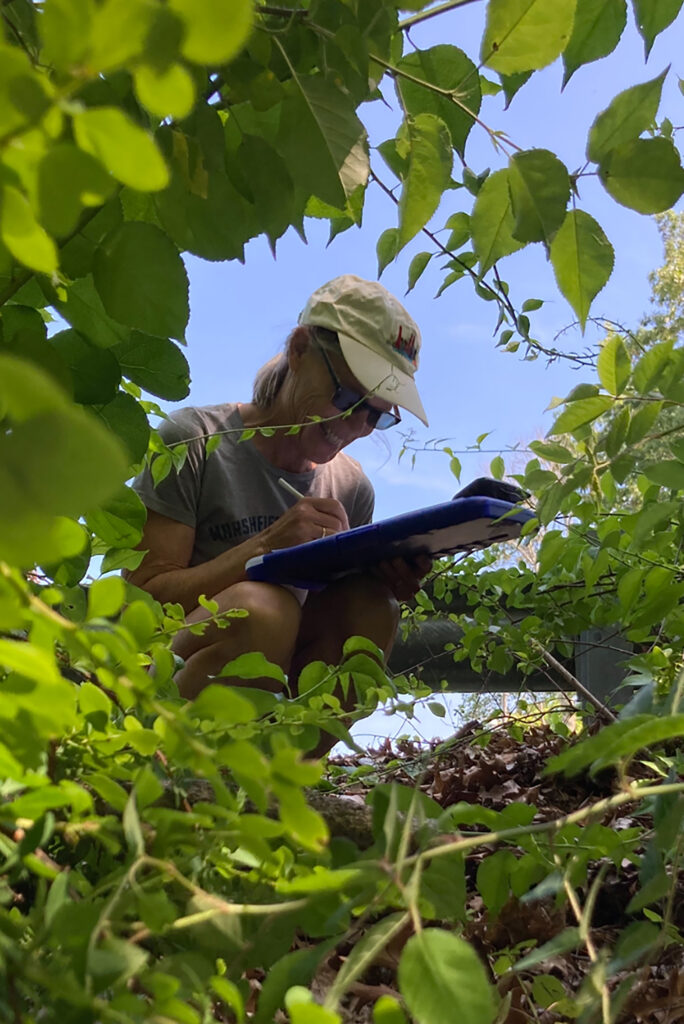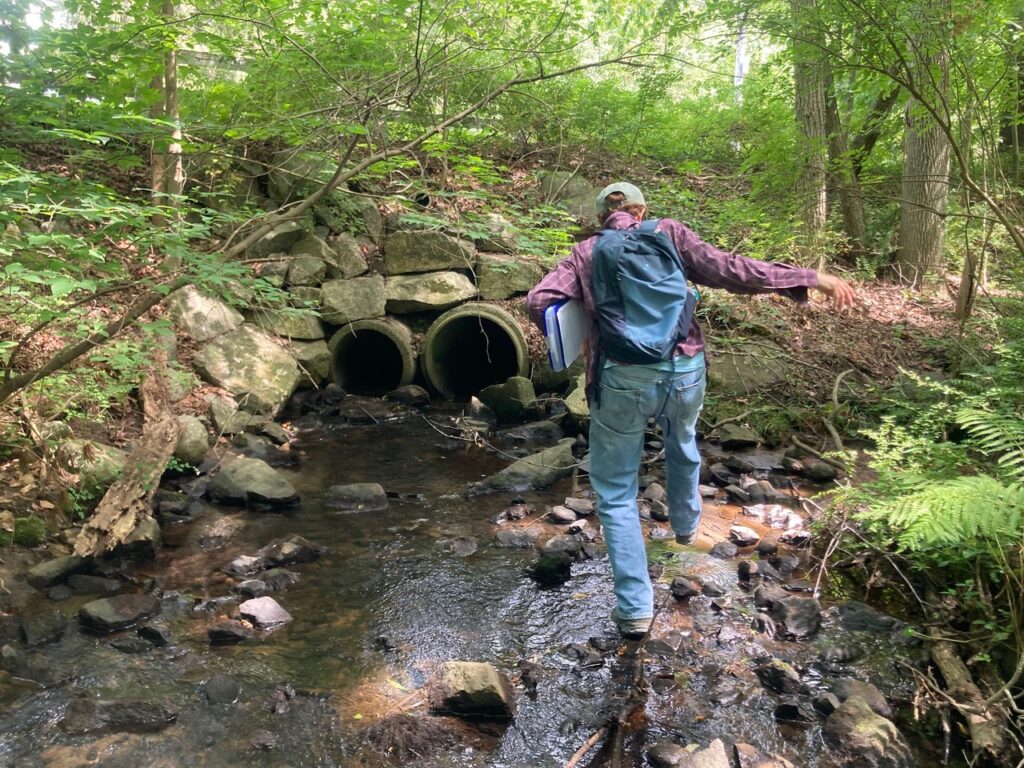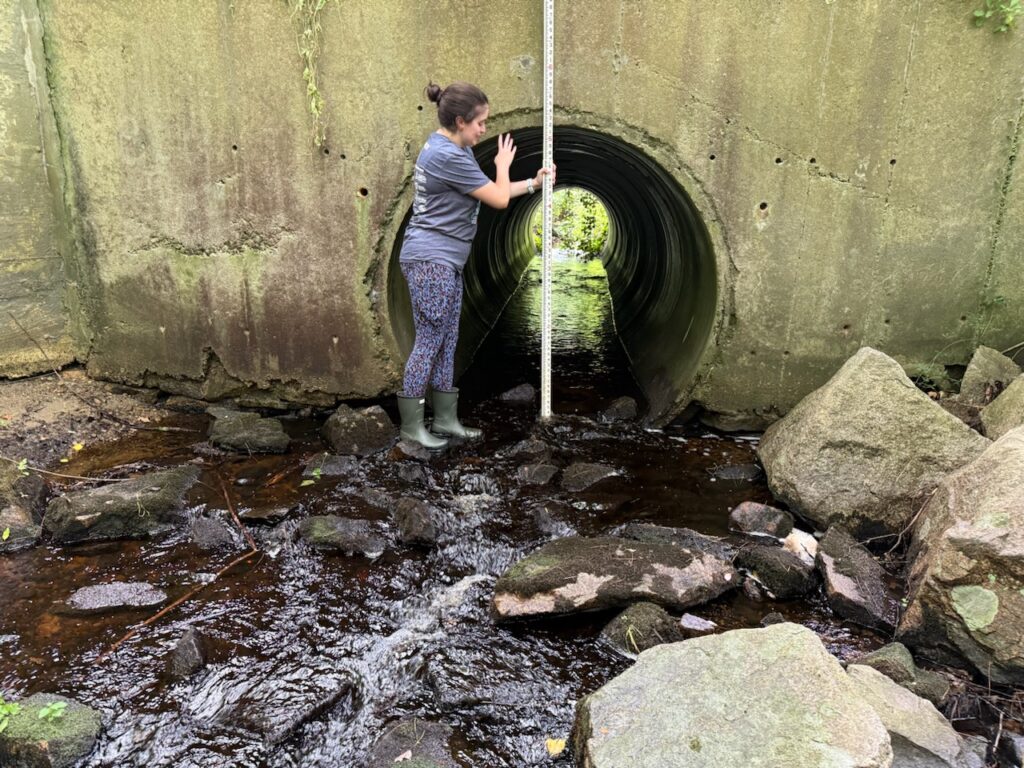
The Stream Stewards have had a busy start to the summer! Over the course of the past six weeks, we have been out assessing culverts in the Weir River Watershed and clearing debris blockages in culverts in the North River Watershed (scroll down for an amazing before-during-after sequence!). We have also collected water quality data at several sites, and are on the hunt for healthy waterways that could provide a cool summer refuge for coldwater species, such as our native Eastern Brook Trout. Future work includes more culvert assessments, blockage clearing, and water quality data collecting, as well as some eDNA sampling. To join the Stream Stewards team, click this link to navigate to our volunteer portal. We’ve still got a few slots open through the end of August, and will be adding shifts into late summer and early fall as needed.

What is eDNA?
Environmental DNA, or “eDNA,” refers to DNA that is found directly in the environment, which was left behind by the organisms living there. Sampling our waterways for eDNA is an excellent way to detect what species live here, without having to rely on seeing or catching the animals themselves. For example, while surveying un unnamed tributary a couple weeks ago, the Stream Stewards team happened upon a small pool with dozens of medium-sized fish. The water was silty and the fish quickly sought hiding spots. We were not able to ID the fish based on visual observation, but will certainly be sampling that section of the stream to discover what species call it home!
 Before, During, and After Debris Clearing – An Example
Before, During, and After Debris Clearing – An Example
Stream Stewards Mary and Ben Cote helped clear a major blockage on the Iron Mine Brook the other day, and WOW did they make a huge difference! This double culvert originally fell victim to a fallen tree trunk drifting down the river. Unable to pass through the culvert’s small inlets, the trunk propped sideways across the front of both of them, and debris began to pile up. Years passed, grapevines rooted themselves in the debris, and the ability for water to pass through the culverts continued to diminish.
This culvert is particularly important, because it is the first culvert upstream from the confluence of Iron Mine Brook and the Indian Head River, and because it also lies between the Iron Mine’s mainstem and a coldwater tributary to the west. In other words, any fish trying to pass between the Iron Mine, its coldwater tributary, and the Indian Head River would have to be able to pass through this culvert. Additionally, any water trying to drain out from the neighborhoods upstream would need to pass through this culvert as well.
When we arrived on site, we found a massive, fibrous mat of roots interwoven with large logs, tree trunks and branches, and plastic debris. The water was merely trickling through the blockage and out the other side, and there is no way fish could have swum through. Deep pools had developed in front of the debris, and the natural transport of water and sediment had been altered.
In the top photo (“before”), you can see stagnant water pooling up in front of the debris on the left-hand side, while the right-hand side is barely visible through the pile-up of branches and roots. The middle photo shows the team removing two of many large submerged tree parts that had piled up over the years. The final photo shows unobstructed streamflow restored at this critical point along the Iron Mine Brook!
Become a Stream Steward
If you’d like to help improve streamflow and fish habitat, consider joining the team! You can use the link provided in the first paragraph to sign in to our volunteer portal. If you are a new volunteer, you will be prompted to fill out a volunteer application. If you an existing volunteer, you can skip that step and navigate directly to volunteer opportunities.

